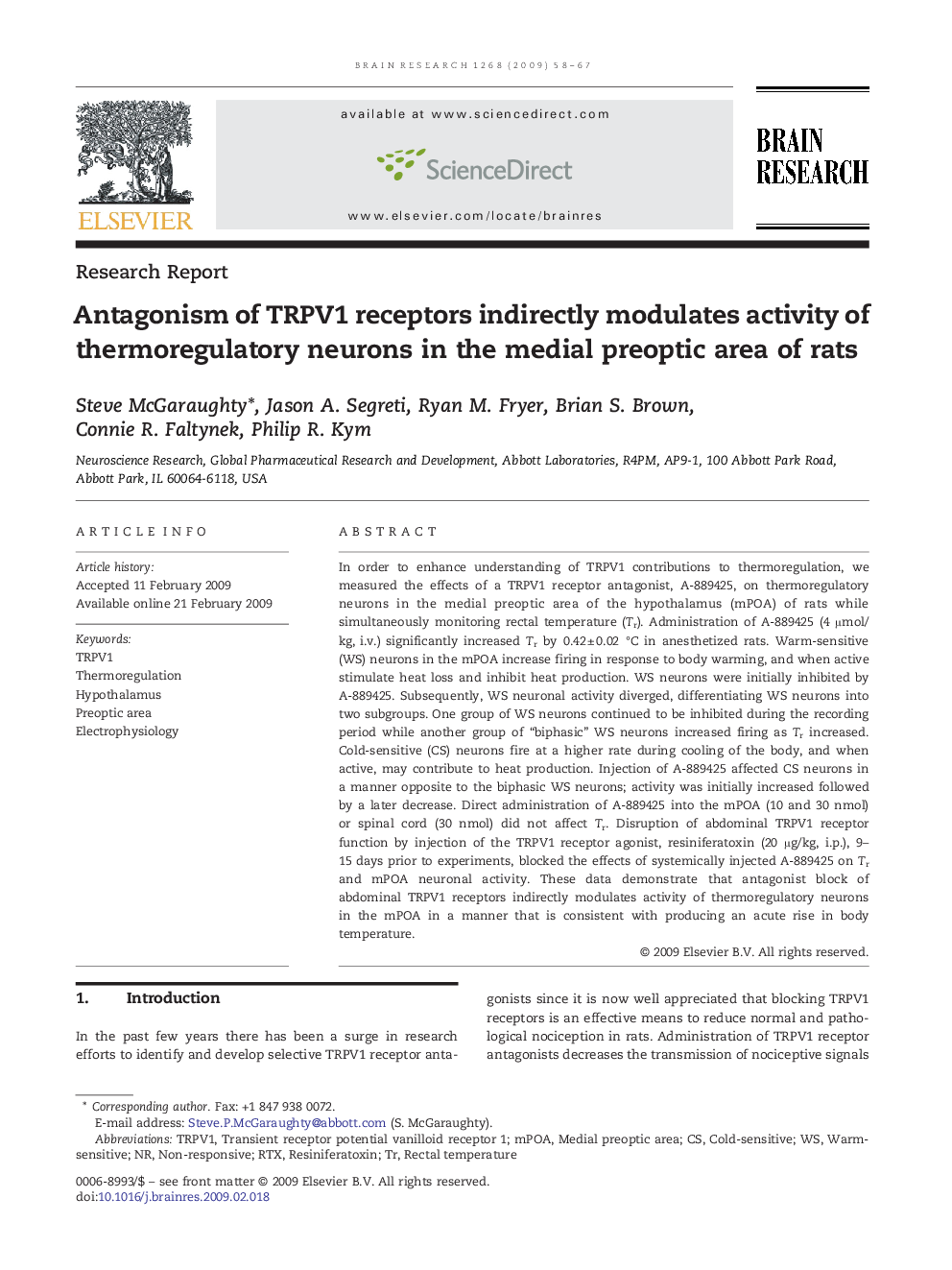| Article ID | Journal | Published Year | Pages | File Type |
|---|---|---|---|---|
| 4328468 | Brain Research | 2009 | 10 Pages |
In order to enhance understanding of TRPV1 contributions to thermoregulation, we measured the effects of a TRPV1 receptor antagonist, A-889425, on thermoregulatory neurons in the medial preoptic area of the hypothalamus (mPOA) of rats while simultaneously monitoring rectal temperature (Tr). Administration of A-889425 (4 μmol/kg, i.v.) significantly increased Tr by 0.42 ± 0.02 °C in anesthetized rats. Warm-sensitive (WS) neurons in the mPOA increase firing in response to body warming, and when active stimulate heat loss and inhibit heat production. WS neurons were initially inhibited by A-889425. Subsequently, WS neuronal activity diverged, differentiating WS neurons into two subgroups. One group of WS neurons continued to be inhibited during the recording period while another group of “biphasic” WS neurons increased firing as Tr increased. Cold-sensitive (CS) neurons fire at a higher rate during cooling of the body, and when active, may contribute to heat production. Injection of A-889425 affected CS neurons in a manner opposite to the biphasic WS neurons; activity was initially increased followed by a later decrease. Direct administration of A-889425 into the mPOA (10 and 30 nmol) or spinal cord (30 nmol) did not affect Tr. Disruption of abdominal TRPV1 receptor function by injection of the TRPV1 receptor agonist, resiniferatoxin (20 μg/kg, i.p.), 9–15 days prior to experiments, blocked the effects of systemically injected A-889425 on Tr and mPOA neuronal activity. These data demonstrate that antagonist block of abdominal TRPV1 receptors indirectly modulates activity of thermoregulatory neurons in the mPOA in a manner that is consistent with producing an acute rise in body temperature.
